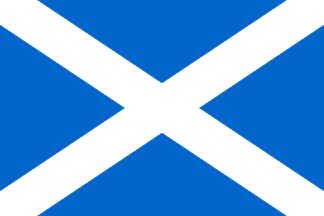The date was the 16th of April, 1746, but the story began in 1603 when King James VI of Scotland (the only child of Mary Queen of Scots and heir of the Stuart Dynasty) ascended to the throne of England upon the death of his third cousin, Queen Elizabeth. He then became James I of England as well as James VI of Scotland, uniting the two countries under continuing Protestant rule.
The crown passed through the Stuart descendants, a mixed bag of Catholics and Protestants, for about 100 years until the Settlement Act of 1701. This Act prevented James III, the great grandson of James I from claiming the British crown in 1714 because he was Catholic. The next nearest Protestant claimant to the throne was a German from Hanover. Thus began the Hanovarian Dynasty of George I and the struggle of the Jacobites (from the Latin for James) to return the throne to the Catholic Stuart Dynasty. After a failed attempt from France by James III himself in 1715, the cause was passed to his son Charles Edward Stuart, known also as Bonnie Prince Charlie.
In 1745 Prince Charles made his move. He landed in Scotland, gathering his forces predominately from the Highlands and swept through the country on a wave of national pride coming within striking distance of London itself. Through a series of bad command decisions, though, the Highlanders eventually found themselves, on Culloden Moor, exhausted and facing the Hanovarian forces who were well rested and under the sharp command of the Duke of Cumberland, the younger son of King George II. They were outnumbered 9000 to 5000.
It was a slaughter that lasted last than an hour. Survivors were given "no quarter" and the dead were buried by the local citizens. There were too many for individual graves so the bodies were interred in mass graves according to their clan. The clan stones still stand on Culloden Moor to this day. Jacobite sympathizers were hunted down over the coming months, many of them killed or taken prisoner to be executed or transported to the colonies in America. The wearing of kilts and clan tartan were outlawed as well as the playing or possession of the bagpipes, considered not a musical instrument but an instrument of war. The Highland clan way of life that had flourished for 600 years was exterminated.

Clan stones on the moor
A visit to the Memorial at Culloden, today, feels more like a pilgrimage to those who love the Scottish Highlands and her rich history. It truly is hallowed ground. Quiet contemplation in front of each of the Clan stones (many with freshly laid flowers), looking to the top of the Memorial with it's inscription to the fallen Highlanders and imagining the ancient way of life that was crushed on that fateful day is sure to move all but the most hardened of hearts. I encourage all who visit to walk the battlelines. Begin at the line of red flag poles that represent the place where the Hanovarian troops were positioned. Look across the Moor to the blue line of the Highlanders. Then walk to the other side and look back across. Look at how boggy and uneven the ground is and try to imagine the physical struggle and confusion of a battle in such a setting. I was overwhelmed with a feeling of reverence and respect for the men who had died in the very field where we were standing. I do not exagerate when I say that we could very nearly feel their presence all around us.....

No comments:
Post a Comment